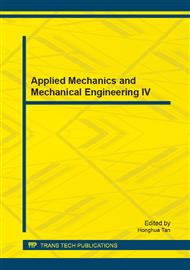p.361
p.368
p.380
p.386
p.390
p.396
p.402
p.407
p.413
A Numerical Study on the Influencing Parameters of Tire-Acoustic Cavity
Abstract:
With the increase in traffic density and speed of motor vehicles tire noise became an important area of research. A number of researchers have worked in the last decade to understand noise due to tires. It is important to identify different noise generation mechanisms that contribute to the tire noise and find a way to reduce it. In the present study, the noise generated by the acoustic cavity of the tire is taken into consideration. A non-linear finite element (FE) model using Abaqus has been developed for determining the acoustic pressure in the air cavity, when subjected to harmonic excitation. The influence of the inflation pressure and vehicle load on the tire acoustic cavity is studied for a passenger car radial tire (PCR) 175/70R13.
Info:
Periodical:
Pages:
390-395
Citation:
Online since:
October 2013
Authors:
Price:
Сopyright:
© 2014 Trans Tech Publications Ltd. All Rights Reserved
Share:
Citation:


